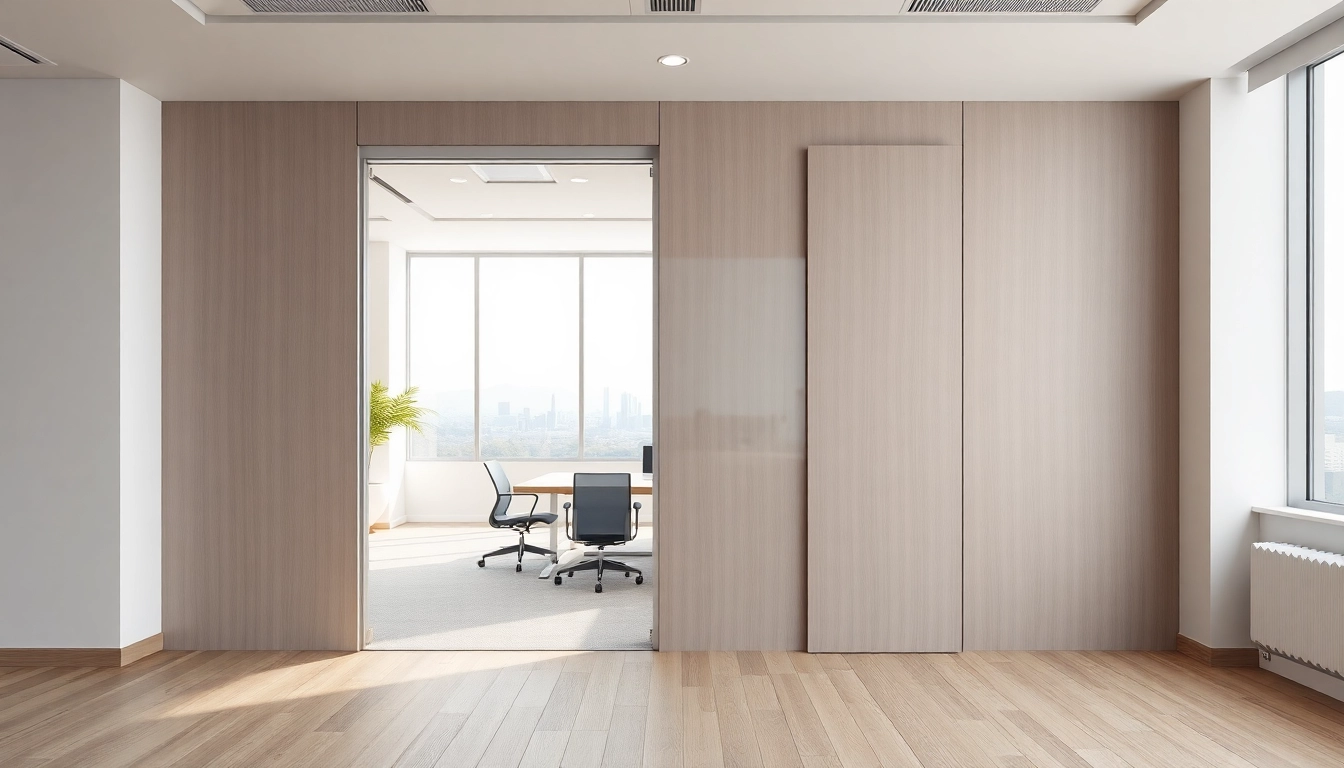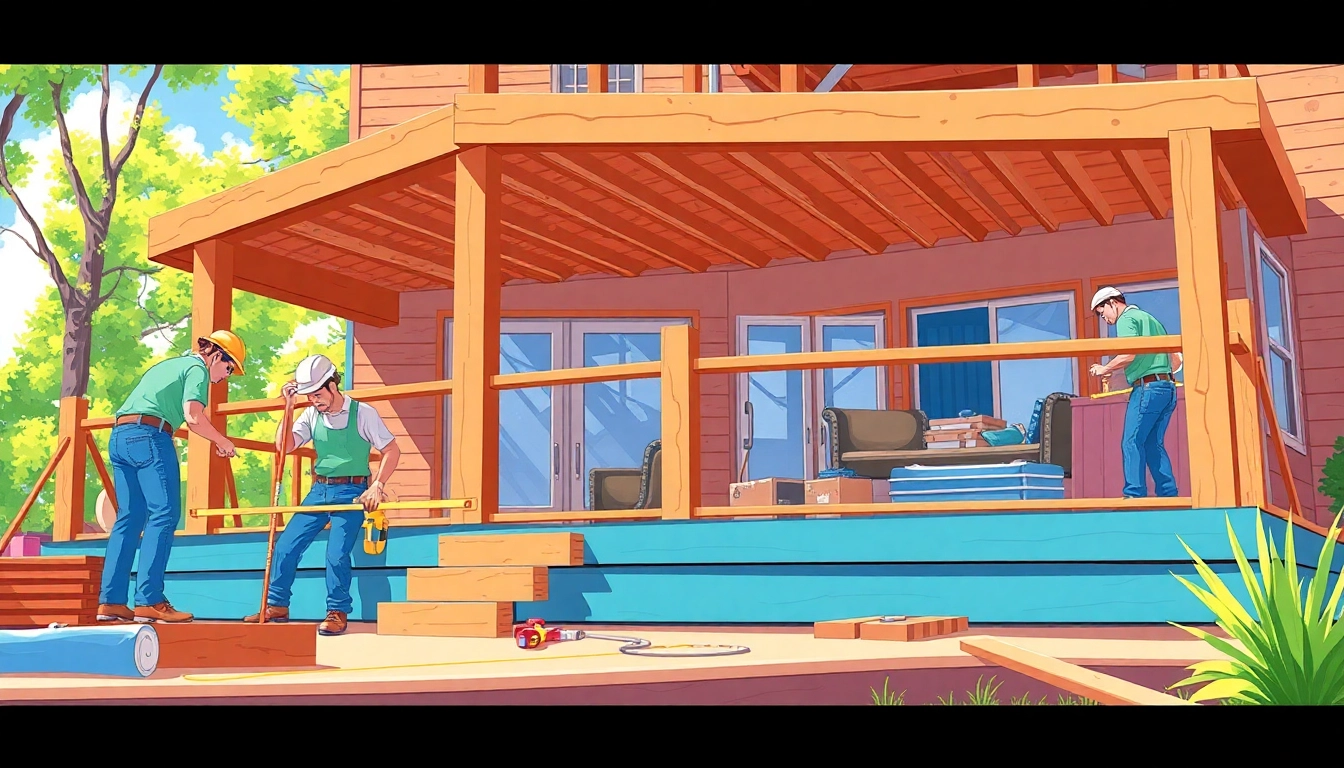Introduction to Folding Partition Walls
In an era where space optimization is paramount, professionals from various fields seek innovative solutions that not only enhance functionality but also add aesthetic value to spaces. One such solution is the Folding Partition Wall. These versatile systems allow spaces to be reconfigured easily, thereby maximizing their usability. In this article, we will explore the detailed aspects of folding partition walls, including their benefits, applications, key features, and much more.
What is a Folding Partition Wall?
A folding partition wall is a movable divider that can be easily opened and closed, allowing for the flexible use of space. Unlike traditional walls, these partitions can be stacked, folded, or retracted, making them ideal for creating adjustable spaces in both residential and commercial settings. They offer a practical solution for businesses and individuals seeking to create dynamic environments tailored to various activities or events.
Benefits of Using Folding Partition Walls
Folding partition walls bring various advantages to users, making them a preferred choice in many environments:
- Flexibility: These walls can be adjusted according to the needs of the moment, allowing for rapid transitions between different configurations.
- Space Optimization: By effortlessly dividing or combining spaces, folding partition walls maximize available areas, enabling efficient space usage.
- Acoustic Control: Many folding partitions offer soundproofing capabilities that help maintain privacy and minimize noise disruption, especially important in communal or commercial settings.
- Cost-Effectiveness: Using these partitions can reduce the need for permanent structural changes, saving both time and money in renovation projects.
- Aesthetic Options: Available in various materials and designs, they can match or enhance the existing decor of any space.
Common Applications in Different Settings
Folding partition walls are employed across various settings, showcasing their adaptability:
- Corporate Offices: Creating meeting rooms or collaborative workspaces that can be easily transformed as needed.
- Schools and Universities: Facilitating classroom sizes and layouts for different learning formats or events.
- Event Venues: Providing the ability to create customizable spaces for events, exhibitions, and gatherings.
- Healthcare Facilities: Offering privacy and flexibility in patient rooms and treatment areas.
Key Features of Folding Partition Walls
Material and Design Options
The range of materials used in folding partition walls includes wood, glass, fabric, and metal, each offering unique attributes:
- Wood: Provides a warm, traditional look while allowing for sound insulation.
- Glass: Enhances visibility and makes spaces feel larger while allowing natural light to flow through.
- Fabric: Adds softness and acoustic absorption, ideal for environments where sound control is essential.
- Metal: Ensures durability and a modern aesthetic.
Acoustic and Aesthetic Benefits
While functionality is crucial, aesthetic appeal and sound management are equally important:
- Sound Insulation: High-quality folding partition walls often feature specialized materials that absorb sound, contributing to quieter environments.
- Visual Appeal: With custom design options, including finishes, colors, and patterns, partition walls can complement or elevate space aesthetics.
- Branding Opportunities: Businesses can leverage partition walls as branding canvases, reinforcing corporate identity in communal or client-facing areas.
Customization and Functionality
Folding partition walls are not one-size-fits-all; they can be tailored to meet specific needs:
- Size Adaptability: Customizable dimensions allow these walls to fit diverse spatial configurations.
- Track Systems: Different track mechanisms can be employed to enhance ease of use, including top-hanging, bottom-rolling, and manual operations.
- Finishing Options: Businesses can select colors and styles that align with existing decor or brand image, ensuring seamless integration into any environment.
Choosing the Right Folding Partition Wall
Assessing Your Space Requirements
Before investing in a folding partition wall, it is essential to evaluate your specific space requirements. Considerations should include:
- The dimensions of the area where the partition will be installed.
- The intended use of the space—whether for meetings, classrooms, or storage areas.
- The desired level of sound control and privacy required.
Comparing Different Types of Partition Walls
There are various types of folding partition walls available, including:
- Accordion Walls: These flexible and space-saving options easily fold back onto themselves.
- Operable Walls: Designed for efficiency, they are typically heavier and provide superior sound insulation.
- Glass Partition Walls: Ideal for maximizing light and maintaining an open feel while providing physical divisions.
Evaluating the differences between these types based on your unique needs can help you make a more informed decision.
Cost Considerations and Budgeting
The cost of folding partition walls can vary widely based on materials, design, and installation complexity. Budgeting effectively requires consideration of:
- Initial purchase and installation costs.
- Long-term maintenance costs.
- Potential savings from increased space utility and energy efficiency.
- Return on investment based on enhanced functionality and aesthetics.
Installation and Maintenance of Folding Partition Walls
Step-by-Step Installation Guide
Successfully installing a folding partition wall involves several steps:
- Planning: Measure the space carefully, noting where the wall will retract and stack.
- Preparation: Ensure the area is clean and free of obstructions.
- Installation of Tracks: Securely mount the overhead track system based on the type of partition wall selected.
- Hanging Panels: Attach panels to the track, starting from one end and ensuring each panel is level.
- Testing: Operate the wall several times to ensure smooth movement before finalizing installation.
Regular Maintenance Tips for Longevity
Maintaining folding partition walls is crucial for their longevity and functionality:
- Regularly inspect the tracks for debris or damage that could hinder operation.
- Clean the surfaces frequently, especially if they come in contact with dust or dirt.
- Address minor repairs immediately to prevent more significant issues from arising.
- Lubricate moving parts as required to ensure smooth operation.
Common Issues and Troubleshooting
Users may encounter several common issues with folding partition walls, such as:
- Sticking Panels: This can often be remedied by ensuring the track is clean and properly lubricated.
- Misalignment: If the panels become misaligned, recheck installation and make necessary adjustments.
- Sound Leakage: If sound insulation is insufficient, consider installing acoustic seals to enhance privacy.
Innovative Trends in Folding Partition Walls
Smart Technology in Partition Systems
The integration of technology into folding partition walls is creating opportunities for additional functionality:
- Automated Systems: Some modern systems can be operated via remote control or integrated smart home systems for convenience.
- Sensors: Motion sensors can facilitate automatic adjustments based on occupancy and usage patterns.
- Data Tracking: Certain advanced systems can provide data on space utilization, helping businesses make informed decisions.
Sustainability and Eco-Friendly Materials
As sustainability becomes increasingly important, manufacturers are responding by offering eco-friendly materials for folding partition walls:
- Recyclable Components: Many new partition products utilize materials that can be recycled at the end of their lifecycle.
- Low-VOC Finishes: Eco-friendly paints and finishes reduce indoor air pollution while enhancing durability.
- Energy-Efficient Designs: With proper insulation properties, these walls can contribute to overall energy savings in a building.
Future Innovations in Space Management
As designs evolve, future folding partition systems may include:
- Modular Design: Allowing users to mix and match panels for custom configurations.
- Integrated Technology: Such as wireless charging capabilities, lighting solutions, and digital displays.
- Enhanced Acoustic Solutions: Incorporating advanced materials that improve soundproofing and aesthetic appeal.
Conclusion
Folding partition walls represent a significant advancement in space management, allowing for unparalleled flexibility and efficiency in both residential and commercial settings. By understanding their features, benefits, and innovative designs, users can make informed decisions that enhance their environments effectively. As the movement toward adaptability continues in architecture and design, folding partition walls will undoubtedly play a pivotal role in shaping the spaces of tomorrow.


